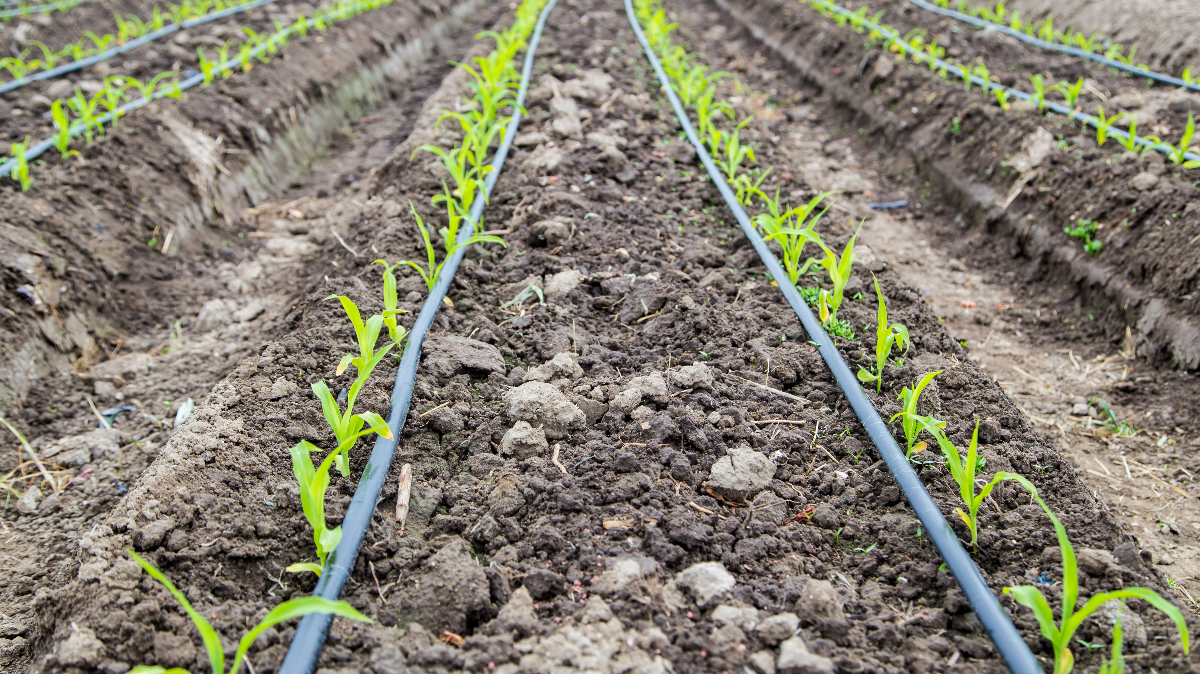The water available for agriculture is decreasing daily due to population growth, low rainfall, and industrialization. It has become necessary to use modern irrigation techniques such as sprinkler irrigation and drip irrigation in agriculture. Drip irrigation is paramount, which is the supply of the required amount of water directed to the root area of the plants through the small tube networks. These networks include plastic pipes, valves, and lateral tubes. Essentially, the water pump and a dripper help to control these components. Also, drip irrigation facilitates the application of liquid fertilizers to the plant roots.
Types of Drip Irrigation
There are various types of drip irrigation available, but the popular ones include:
1. Surface drip system
This is the famous and most common drip system. It is appropriate for plants row crops and wide-spaced plants. The lateral pipe and emitter are positioned on the soil surface. The surface drip facilitates monitoring and controlling emissions, modifying, cleaning, measuring individual emitter runoff rates, and monitoring surface moisture patterns.
2. Sub-surface drip system
The lateral is near the plant’s root zone and below the ground with the sub-surface drip system. The water is applied slowly under the surface via the emitters. This sub-surface drip system has acquired wider acceptance because of removing the earlier clogging problems essentially. Because of this type, there is fewer cultural practices or agricultural intervention and perhaps more operational life.
What are the prerequisites for success with drip irrigation?
Proper project design
Drip irrigation becomes the permanent system designed to meet the needs of the plants in whatever conditions they experience during the growing cycle. It is a challenge to change it as it needs to be designed carefully from the start. Alternatively, it cannot be achieved without prior economic and technical research from specialized specialists. Therefore, all systems that do not guarantee the expected services are useless in use.
Good maintenance of the irrigation system
The efficiency and sustainability of drip irrigation depend on equipment maintenance like purification and maintenance of filters, control of the drip flow, and washing of pipes in the season. Also, it depends on cleaning the entire irrigation network at any rate at the end and beginning of the season.
Using a quality water treatment filter press is the best way to ensure your system runs efficiently and effectively. Filters can reduce clogging from suspended particles, organic matter, algae, bacteria, or other impurities. Furthermore, regular monitoring of water pressure should be undertaken to prevent high and low pressures that could impact the functioning of drip irrigation systems.
Water control distribution
The water distribution from the midpoint of the irrigation unit is the best than the lateral distribution. The drippers that are positioned at the high-pressure area are better than those in the low-pressure zone. Besides, the irrigation network must be operated not less than 24 hours after the work has ended so that it must be washed and cleaned of dust and dirt. You are not supposed to bury or cover the pipes unless it is guaranteed that they will not crack or malfunction during installation.
Conclusion
Drip irrigation is a modern technique for watering plants. It transports water to the plants and slows down weed growth. Typically, it is the best irrigation technique that saves water with little dripping, no evaporation, and wind. Also, this drip irrigation comes in different types, mainly surface drip systems and sub-surface drip systems, which can help meet various water requirements.

